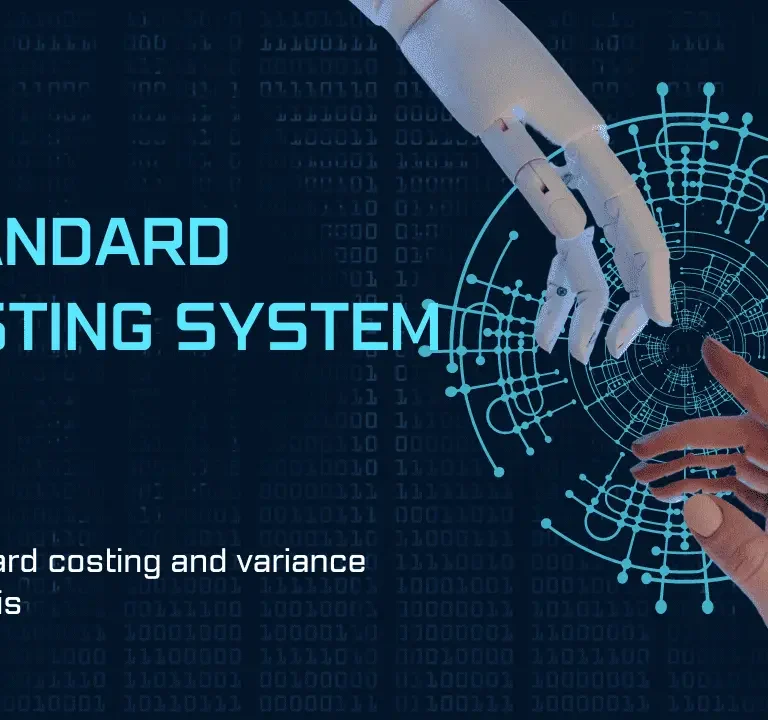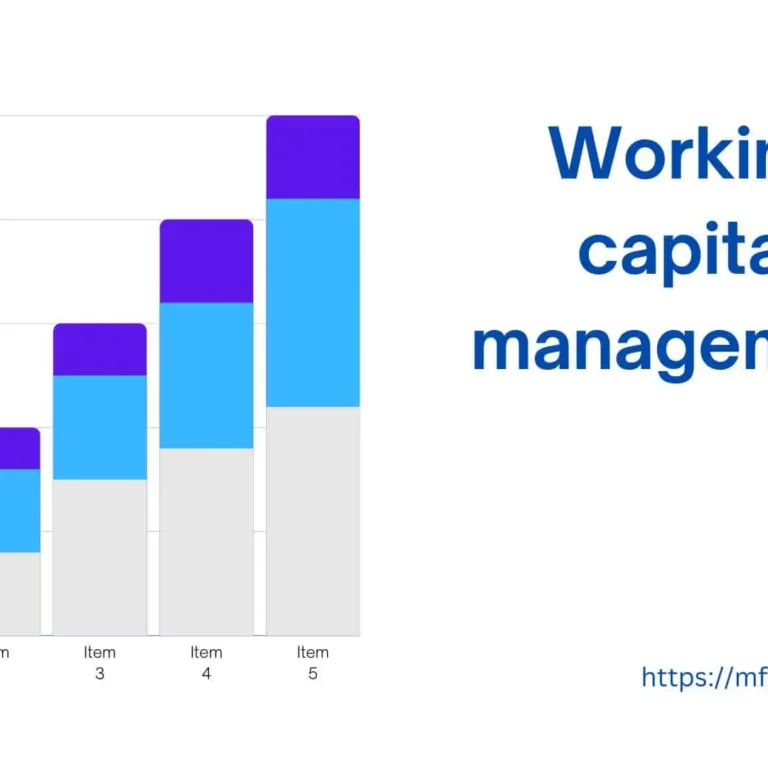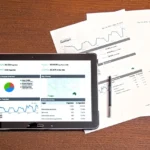Introduction:
Risk management plays a vital role in the manufacturing industry, where companies face various risks that can impact their operations, financial performance, and reputation.
The manufacturing sector involves complex supply chains, operational processes, and regulatory requirements, making it susceptible to a wide range of risks.
In the manufacturing industry, risks can arise from factors such as supply chain disruptions, equipment failures, workplace accidents, product quality issues, compliance breaches, and environmental concerns. These risks can lead to production delays, increased costs, damaged reputation, legal liabilities, and loss of market share.
Effective risk management in the manufacturing industry involves identifying, assessing, and mitigating potential risks. This process requires a comprehensive understanding of the organization’s operations, vulnerabilities, and potential impact of risks. Risk management strategies may include implementing robust safety protocols, ensuring proper maintenance of equipment, diversifying suppliers, conducting thorough quality control measures, and adhering to regulatory requirements.
Furthermore, risk management in the manufacturing industry involves establishing contingency plans, business continuity strategies, and insurance coverage to mitigate the financial impact of potential risks. Regular monitoring and evaluation of risks, along with ongoing improvement initiatives, are essential to ensure the effectiveness of risk management strategies.
Understanding the Manufacturing Industry Risks:
Operational Risks:
Operational risks in manufacturing encompass a range of potential hazards that can impact the day-to-day operations of a manufacturing facility. These risks can include equipment failures, supply chain disruptions, production errors, employee accidents or injuries, process inefficiencies, and quality control issues.
Supply chain disruptions and logistics challenges.
Supply chain disruptions and logistics challenges are common issues faced by manufacturers. Factors such as raw material shortages, transportation delays, customs regulations, and geopolitical events can disrupt the flow of goods and impact production schedules, inventory management, and customer satisfaction. Effective supply chain management and contingency plans are crucial for mitigating these challenges.
Equipment breakdowns and maintenance issues.
Equipment breakdowns and maintenance issues pose significant risks in the manufacturing industry. Unplanned downtime due to equipment failures can disrupt production schedules, lead to increased costs, and affect customer satisfaction. Implementing proactive maintenance strategies and regular equipment inspections are essential to mitigate these risks and ensure optimal equipment performance.
Quality control and product defects.
Quality control is a critical aspect of manufacturing, aiming to ensure that products meet predetermined quality standards and specifications. Product defects, such as manufacturing errors, design flaws, or substandard materials, can lead to customer dissatisfaction, recalls, and financial losses. Effective quality control processes are essential to minimize product defects and maintain customer satisfaction.
Financial Risks:
Financial risks in manufacturing can stem from various factors and have significant implications for the overall financial health of a company. These risks include fluctuating raw material costs, currency exchange rate volatility, interest rate fluctuations, credit risks from customers or suppliers, and market demand volatility.
Fluctuating raw material costs can impact profit margins and operational costs. Currency exchange rate volatility can affect import/export activities and the competitiveness of products in global markets. Interest rate fluctuations can impact borrowing costs and debt management.
Credit risks arise when customers or suppliers fail to fulfill their financial obligations, leading to potential losses. Market demand volatility can result in inventory management challenges and the risk of overproduction or underutilized capacity.
Fluctuating raw material prices.
Fluctuating raw material prices pose financial risks in the manufacturing industry. Sudden increases in raw material costs can squeeze profit margins, while significant decreases can lead to inventory devaluation. Effective risk management strategies, such as hedging or supplier diversification, are crucial to mitigate the impact of volatile raw material prices.
Currency exchange rate risks.
Currency exchange rate risks in manufacturing refer to the potential adverse impact on financial performance due to fluctuations in exchange rates. Manufacturers that engage in international trade may face challenges such as volatile currency exchange rates, which can affect costs, pricing, profitability, and competitiveness. Effective risk management strategies are crucial to mitigate currency exchange rate risks in the manufacturing industry.
Credit and liquidity risks.
Credit and liquidity risks are significant financial risks faced by manufacturing companies. Credit risk refers to the potential for customers or suppliers to default on payment obligations, impacting cash flow and profitability. Liquidity risk pertains to the company’s ability to meet short-term financial obligations. Effective risk management strategies are crucial in mitigating these risks and ensuring financial stability in the manufacturing industry.
Compliance Risks:
Compliance risks refer to the potential for an organization to violate laws, regulations, industry standards, or internal policies and procedures. In the manufacturing industry, compliance risks can arise from various sources, including environmental regulations, workplace safety standards, labor laws, product labeling requirements, and export/import regulations.
Non-compliance with these regulations can result in severe consequences, such as legal penalties, fines, litigation, damage to reputation, and operational disruptions. The manufacturing industry operates within a complex regulatory landscape, requiring companies to maintain a thorough understanding of applicable regulations and implement robust compliance management systems.
Effective compliance risk management involves conducting regular audits, implementing internal controls, providing employee training, and maintaining proper documentation. It also requires ongoing monitoring of regulatory changes to ensure ongoing compliance.
Regulatory compliance and environmental regulations.
Regulatory compliance and environmental regulations are significant concerns in the manufacturing industry. Non-compliance with regulations can result in legal penalties, fines, reputational damage, and operational disruptions. Compliance risks involve the failure to adhere to relevant laws and regulations, including environmental, health and safety, labor, and product safety standards. Implementing robust compliance measures is crucial to mitigate these risks and ensure responsible and sustainable manufacturing practices.
Occupational health and safety compliance.
Occupational health and safety compliance is of paramount importance in the manufacturing industry. Failure to comply with safety regulations and standards can lead to accidents, injuries, legal penalties, and reputational damage. Compliance risks in this area include inadequate training, improper use of equipment, lack of safety protocols, and failure to maintain a safe working environment. Effective compliance management is necessary to mitigate these risks and protect the well-being of employees.
Intellectual property protection.
In the manufacturing industry, intellectual property protection is crucial to safeguarding proprietary technologies, designs, and innovations from unauthorized use or infringement. Compliance risks, on the other hand, refer to the potential violations of legal, regulatory, and industry-specific requirements, such as environmental regulations, labor laws, and safety standards. Proactive measures are necessary to mitigate these risks and ensure legal and ethical compliance.
Risk Assessment and Identification:
Risk assessment and identification are vital components of risk management in the manufacturing industry. The process involves systematically identifying potential risks and evaluating their likelihood and potential impact on operations, financials, and reputation.
In the manufacturing industry, risk assessment may cover a wide range of areas, including supply chain vulnerabilities, equipment failures, operational disruptions, product quality issues, regulatory compliance, cybersecurity threats, and environmental risks.
To effectively assess and identify risks, manufacturers employ various methods such as conducting risk audits, engaging cross-functional teams, analyzing historical data, performing scenario analysis, and leveraging industry best practices.
By proactively identifying and assessing risks, manufacturers can develop strategies to mitigate and manage these risks effectively. This may involve implementing preventive measures, adopting robust quality control processes, diversifying suppliers, ensuring adequate safety protocols, investing in cybersecurity measures, and maintaining compliance with regulations.
Conducting a thorough risk assessment:
Conducting a thorough risk assessment in the manufacturing industry involves identifying potential risks, evaluating their likelihood and potential impact, and prioritizing them based on severity. This includes analyzing supply chain vulnerabilities, operational processes, equipment reliability, regulatory compliance, and other factors to identify and mitigate potential risks.
Identifying potential risks and their impact on operations.
In the manufacturing industry, potential risks can include supply chain disruptions, equipment breakdowns, safety incidents, product defects, regulatory non-compliance, and environmental issues. These risks can lead to production delays, increased costs, reputation damage, legal consequences, and reduced customer satisfaction
Evaluating the likelihood and severity of each risk.
Evaluating the likelihood and severity of each risk in manufacturing is crucial in determining the priority and appropriate mitigation measures. Likelihood assesses the probability of a risk occurring, while severity evaluates the potential impact or consequences. This assessment helps allocate resources effectively and prioritize risk management efforts.
Prioritizing risks based on their significance.
Prioritizing risks based on their significance in the manufacturing industry involves assessing the potential impact and likelihood of each risk occurrence. Risks with higher potential consequences, such as those affecting safety, product quality, or operational continuity, are given higher priority for mitigation and management.
Developing a Risk Management Plan:
Developing a robust risk management plan is essential for the manufacturing industry to proactively identify, assess, and mitigate potential risks. Here are key steps to consider in creating an effective risk management plan:
Risk Identification:
Identify and document potential risks specific to the manufacturing processes, supply chain, equipment, personnel, regulatory compliance, and other relevant areas. Engage stakeholders, including employees, suppliers, and experts, to gather comprehensive inputs.
Risk Assessment:
Evaluate the likelihood and potential impact of each identified risk. Prioritize risks based on their severity and likelihood of occurrence. This step helps in focusing resources on managing high-priority risks.
Risk Mitigation Strategies:
Develop strategies and action plans to minimize, control, or eliminate identified risks. These strategies may include implementing safety protocols, improving equipment maintenance, establishing quality control measures, diversifying suppliers, and adopting redundancy measures in critical processes.
Contingency Planning:
Develop contingency plans to respond to potential risk events. These plans should outline steps to be taken in case of supply chain disruptions, equipment failures, natural disasters, or other unforeseen circumstances. Establish clear roles, responsibilities, and communication channels to ensure a swift and effective response.
Monitoring and Review:
Regularly monitor and review the effectiveness of risk management strategies. Conduct periodic risk assessments to identify new risks, evaluate changes in existing risks, and update risk mitigation measures accordingly.
Implementing Risk Monitoring and Review:
Implementing effective risk monitoring and review processes is crucial in the manufacturing sector to ensure that risk management strategies remain relevant, proactive, and aligned with the evolving risk landscape. Here are key considerations for implementing risk monitoring and review in the manufacturing sector:
Establish Key Risk Indicators (KRIs):
Identify and define key metrics and indicators that serve as early warning signals for potential risks. These KRIs should be specific, measurable, and aligned with the organization’s risk appetite and objectives. Examples of KRIs in manufacturing may include supplier performance metrics, equipment downtime rates, workplace safety incidents, or regulatory compliance deviations.
Regular Data Collection:
Implement a systematic process to collect relevant data for risk monitoring. This may involve leveraging technology solutions such as real-time monitoring systems, IoT sensors, or automated data capture tools. Ensure data accuracy, consistency, and integrity to facilitate meaningful analysis and decision-making.
Analyze and Interpret Data:
Conduct regular analysis of collected data to identify trends, patterns, and anomalies. Compare actual performance against established benchmarks or thresholds. This analysis helps to identify emerging risks, potential areas of concern, or deviations from expected norms.
Risk Reporting and Communication:
Develop clear reporting mechanisms to communicate risk-related information to key stakeholders. Reports should provide a concise summary of risk exposure, mitigation activities, and notable findings. Tailor the format and content of reports to meet the specific needs of different stakeholders, such as executives, operational teams, or regulatory bodies.
Review and Update Risk Management Strategies:
Conduct periodic reviews of the effectiveness of risk management strategies and controls. Assess whether existing strategies adequately address identified risks and align with changing business objectives or external factors. Update risk mitigation measures and action plans as needed based on lessons learned and evolving risk profiles.
Continuous Improvement:
Foster a culture of continuous improvement in risk management. Encourage feedback from employees, suppliers, and other stakeholders regarding potential risks and improvement opportunities. Regularly review and refine risk management processes based on feedback and emerging best practices.
Case Studies:
Introduction:
ABC Manufacturing is a global automotive parts manufacturer operating across multiple countries. The company recognized the need to develop a comprehensive risk management strategy to proactively identify and mitigate potential risks that could impact its operations, supply chain, and financial performance.
Risk Identification:
ABC Manufacturing engaged a cross-functional team to conduct a thorough risk assessment. The team identified key risks, including supply chain disruptions, equipment failure, regulatory compliance, and cybersecurity threats. They also considered risks associated with market volatility, currency fluctuations, and geopolitical factors.
Risk Mitigation Strategies:
Based on the identified risks, ABC Manufacturing implemented several risk mitigation strategies. They enhanced supplier management by diversifying their supplier base and establishing backup suppliers for critical components. They also invested in preventive maintenance programs to reduce the risk of equipment failure and downtime.
To address regulatory compliance risks, the company implemented robust internal controls, conducted regular audits, and ensured employee training on compliance requirements. Additionally, they implemented cybersecurity measures, such as firewalls, encryption, and employee awareness programs, to protect against potential data breaches.
Monitoring and Review:
ABC Manufacturing established a dedicated risk management team responsible for ongoing monitoring and review of risk mitigation efforts. The team regularly collected and analyzed key risk indicators, such as supplier performance metrics, equipment downtime rates, and regulatory compliance deviations.
Any emerging trends or anomalies were promptly addressed through proactive corrective actions. The risk management team also provided regular reports to senior management and the board of directors, highlighting risk exposure and the effectiveness of mitigation strategies.
Continuous Improvement:
To foster a culture of continuous improvement, ABC Manufacturing encouraged employees to report potential risks and improvement opportunities. They conducted periodic reviews of the risk management strategy, incorporating feedback from stakeholders and industry best practices. The company also organized training sessions and workshops to enhance risk awareness and promote risk management practices at all levels of the organization.
Results:
By implementing a robust risk management strategy, ABC Manufacturing significantly reduced the occurrence and impact of potential risks. The company experienced fewer supply chain disruptions, improved equipment reliability, and maintained a strong record of regulatory compliance. The proactive approach to risk management increased the company’s resilience, protected its reputation, and ensured the uninterrupted delivery of high-quality automotive parts to customers worldwide.
Conclusion:
ABC Manufacturing’s case demonstrates the importance of a comprehensive risk management strategy in the manufacturing sector. By identifying, mitigating, monitoring, and continuously improving risk management practices, manufacturers can effectively safeguard their operations, protect stakeholders’ interests, and maintain a competitive edge in a dynamic and challenging industry.
Conclusion:
In conclusion, effective risk management is paramount in the manufacturing industry to mitigate potential risks and ensure the smooth functioning of operations. The complex nature of the manufacturing sector, with its intricate supply chains, machinery, and regulatory requirements, necessitates a proactive approach to identifying, assessing, and managing risks.
By implementing robust risk management strategies, manufacturers can protect their operations from disruptions, reduce downtime, enhance product quality, and safeguard their reputations. These strategies involve risk identification, assessment, and the development of mitigation plans tailored to specific risks such as supply chain disruptions, equipment failures, regulatory compliance, and cybersecurity threats.
Regular monitoring and review of risk management efforts enable manufacturers to stay updated on evolving risks, identify emerging trends, and take timely corrective actions. Continuous improvement initiatives foster a culture of risk awareness and enable the implementation of best practices across the organization.
Ultimately, effective risk management in the manufacturing industry helps companies optimize performance, enhance customer satisfaction, and achieve long-term success in a highly competitive and challenging business environment. By actively addressing and mitigating potential risks, manufacturers can navigate uncertainties, drive operational excellence, and maintain their position as industry leaders.










[…] outflows, allowing companies to maintain optimal liquidity levels. It also plays a crucial role in risk management, detecting potential financial fraud, anomalies, and inefficiencies before they escalate into major […]